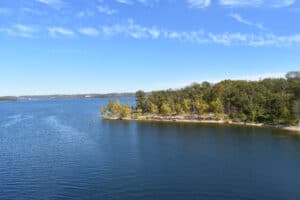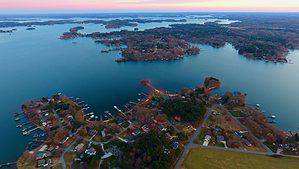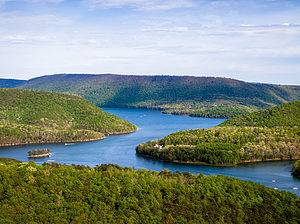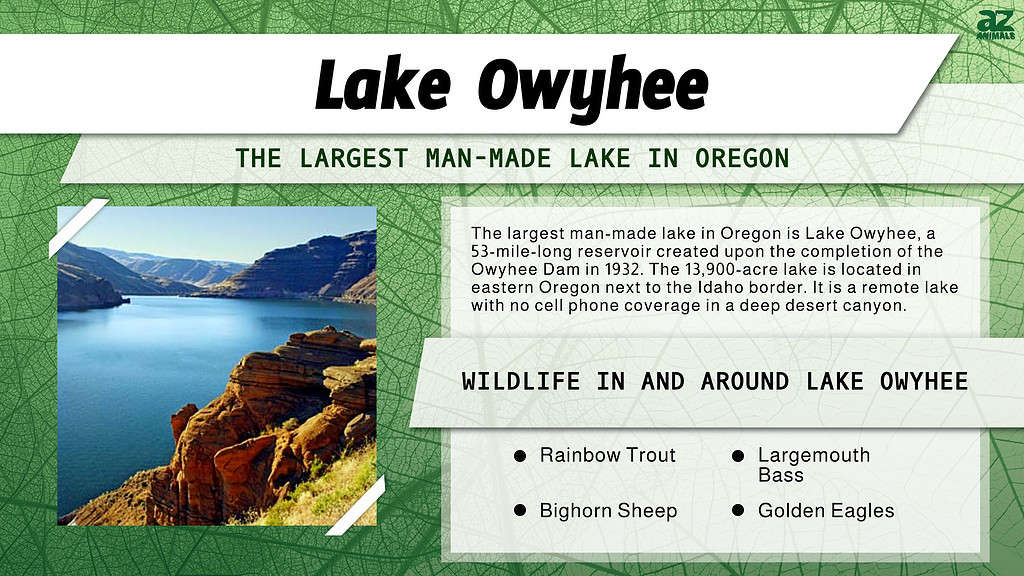
Oregon is located on the West Coast of the United States. It’s one of three states with a Pacific Ocean coastline and the USA’s ninth largest state. Rocky seashores, mountains, deserts, thick forests, deep canyons, and stunning lakes dot the landscape. Oregon is home to the deepest lake in the U.S., Crater Lake. However, it also boasts lots of large man-made lakes. Keep reading to learn about the largest man-made lake in Oregon!
Largest Man-Made Lake in Oregon
Lake Owyhee (pronounced oh-why-he) is the largest man-made lake in Oregon. It is 53 miles long, 25 meters wide, and has an average depth of 35 meters.
Built in 1932, this 13,900-acre lake is located in far eastern Oregon next to the Idaho border. It’s 11 miles southwest of Adrian, Oregon.
The Owyhee Dam on the Owyhee River forms Lake Owyhee. It’s a remote reservoir with no cell phone coverage or pay phones in a deep desert canyon with volcanic rock formations all around.
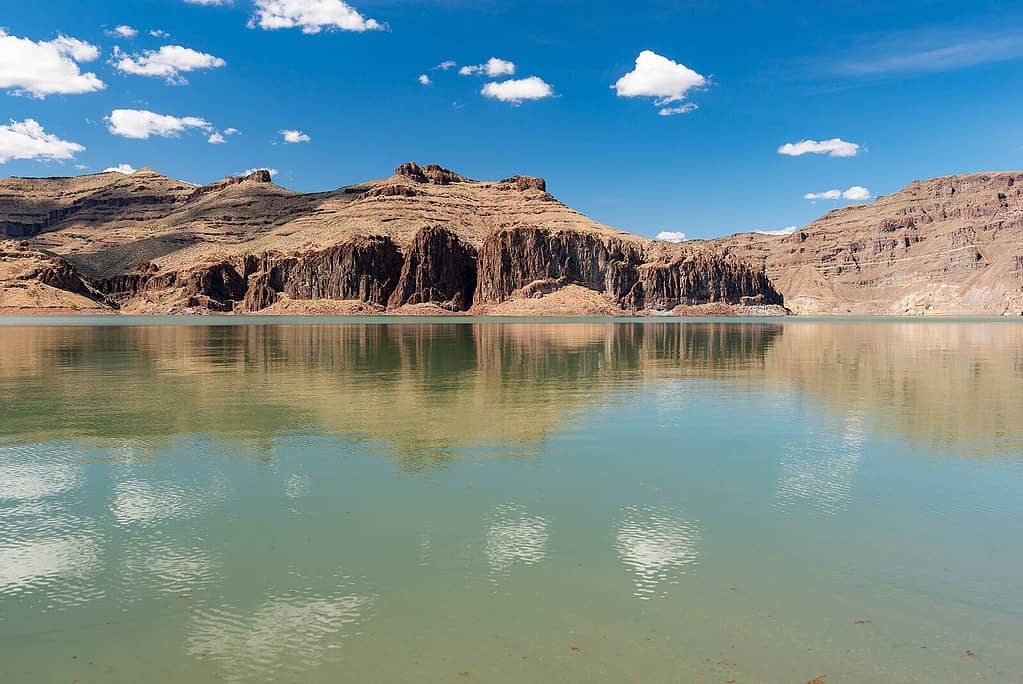
Built in 1932, Lake Owyhee is the largest man-made lake in Oregon.
©Oregon State Archives, CC BY 4.0 <https://creativecommons.org/licenses/by/4.0>, via Wikimedia Commons – License
Who Built the Owyhee Reservoir and Dam?
Engineers built the largest man-made lake in Oregon in 1932 using new techniques that would be essential in constructing the famous Hoover Dam just a few years later.
The name Owyhee is from an old dialect. It refers to Hawaiian fur trappers who were killed there by Snake Indians in 1819. Owyhee is an old variation of the name “Hawaii.”
Owyhee Dam is an irrigation dam on the Owyhee River that forms the largest (by length) man-made lake in Oregon. It’s 417 feet tall and, at the time, was the world’s tallest dam.
As a storage and irrigation dam, it serves eastern Oregon and southwestern Idaho. At the start, it supplied water to 80,000 acres of new land. Today, Lake Owyhee supplies water for 1,800 farms and 118,000 acres of land, primarily growing onions and hops.
To take building materials to the site, in 1928, engineers built a new 24-mile railroad! This infamous year introduced the Great Depression, but work continued, and in 1935, irrigated water was finally delivered.
Owyhee River
The Owyhee Dam manages the Owyhee River. It’s a 289-mile-long tributary of the Snake River that provides water for the largest population of California bighorn sheep! Visitors can also spot the endangered greater sage grouse on its shores.
Because it slices through southeast Oregon’s dry uplands (called the Owyhee Plateau), the Owyhee River is named Oregon’s Grand Canyon. It created a stunning gorge up to 300 meters deep that displays millions of years of geological activity.
Where to Find Lake Owyhee on a Map
Lake Owyhee is a breathtaking natural wonder located in the state of Oregon. It’s situated in the southeast corner of the state and covers an area of approximately 13,900 acres. To find it on a map, you can use its geographical coordinates: latitude 43° 46′ N and longitude 117° 05′ W.
If you’re looking for more specific directions to Lake Owyhee, then here they are: from Portland (Oregon’s largest city), take I-84 East towards Ontario. Once you reach Ontario, drive south on US-95 for about an hour until you reach Jordan Valley. From there, continue driving south on OR-201 for another hour or so until you arrive at Lake Owyhee State Park.
Wildlife at Oregon’s Largest Man-Made Lake
Wildlife at Lake Owyhee is varied and plentiful. The lake draws golden eagles, ground squirrels, coyotes, pronghorns, deer, wild horses, and rabbits. Visitors can glimpse mountain lions and California big sheep nearby, but be careful of rattlesnakes.
Anglers fishing the largest man-made lake in Oregon catch rainbow trout, largemouth bass, smallmouth bass, crappie, yellow perch, and brown bullhead. Black crappie and largemouth bass are particularly plentiful.
Leisure at Owhyhee Lake
First off, this is a remote area! Lake Owyhee State Park and Leslie Gulch Canyon run alongside its eastern shore. Leslie Gulch Canyon is named after a rancher who was struck by lightning there in 1882!
It’s so remote that the closest hospital is over an hour’s drive away, and there’s no phone reception. However, these setbacks do not deter Owyhee Lake’s visitors. Repeat anglers return each year, drawn to its large fish. Glimpses of Lake Owyhee’s incredible animals reward wildlife enthusiasts.
This 53-mile-long desert canyon lake with rugged mountain borders is perfect for quiet boating, and there’s a highly rated hard hikers’ trail called the Fisherman’s Road just next to it. The trail is just over eight miles long and reaches 596 meters in elevation, enough to provide really spectacular views. Geology fans find petrified wood, picture jasper, and thundereggs along the shoreline and hiking trails.
Accessibility is limited due to the remote location, but Gordon Gulch Area provides picnic tables and a boat ramp.
What Is a Man-Made Lake?
Man-made lakes are artificial lakes built to store water. The majority are made when dams block rivers, but damming a natural lake can also create an artificial lake.
Dams control reservoir water levels, irrigate surrounding land, provide water to inhabitants, and control destructive flood damage.
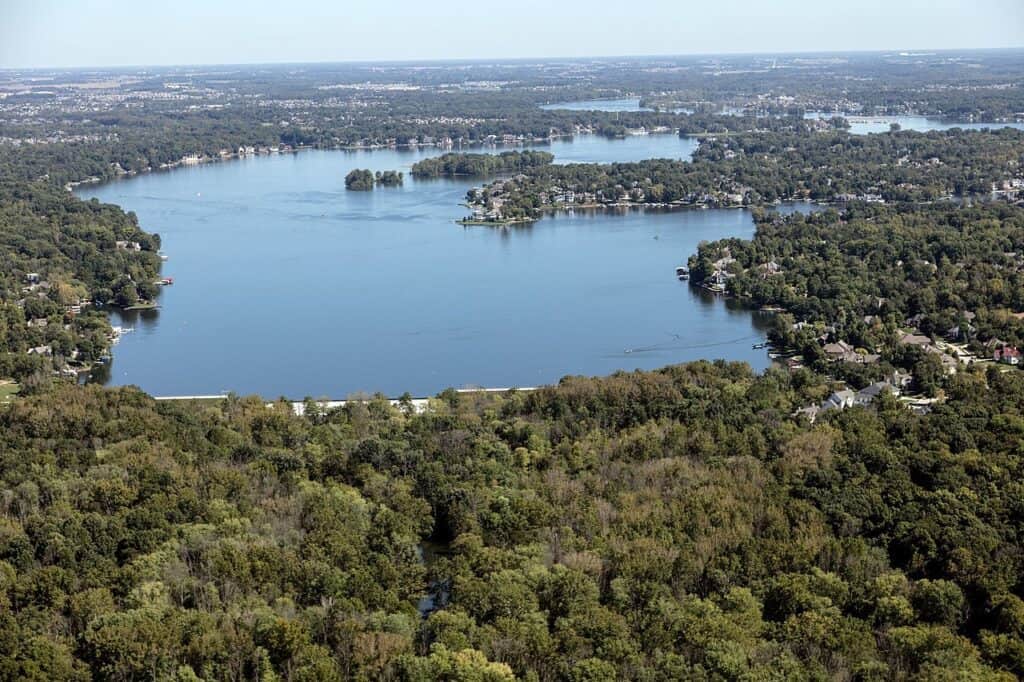
The majority of man-made lakes are created when dams block rivers, but damming a natural lake can also create an artificial lake.
Largest Lake in Oregon
The 53-mile-long Lake Owyhee is the largest man-made lake in Oregon by length, but the largest lake in Oregon by surface area is Upper Klamath Lake. This lake is 25 miles long and eight miles wide. However, it’s just a fraction of its previous size. It was 10 times as big 10,000 years ago! Its surface area diminished in the Pleistocene Era’s warming climate.
Upper Klamath Lake is excellent for rainbow trout angling. Because its water is so warm, 90% of the fish population is blue chub and tui chub. Boaters enjoy the lake’s scenic coastline, but the water quality is poor due to past environmental practices. Therefore, officials discourage water contact activity.
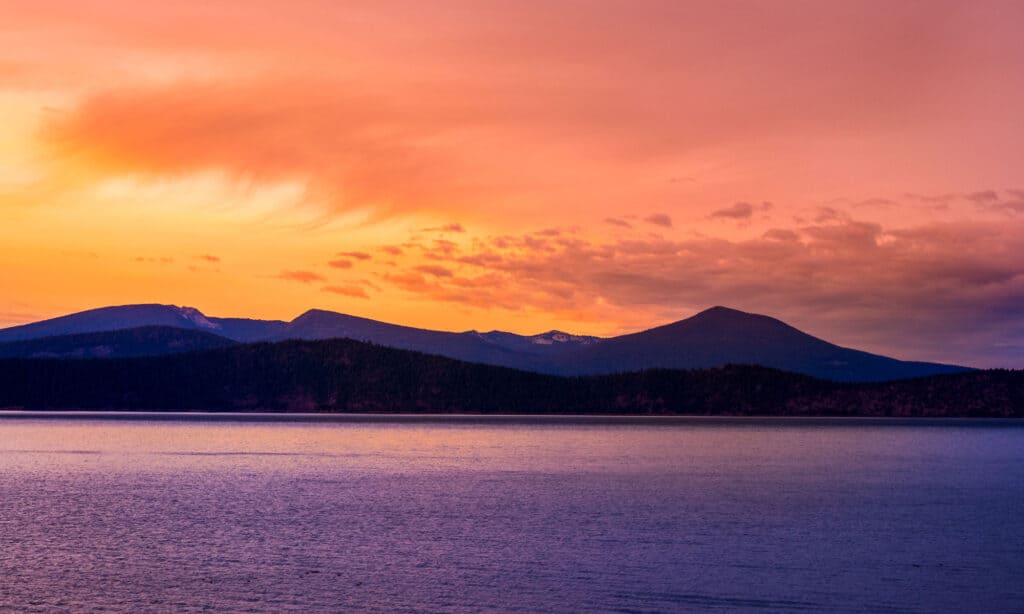
Upper Klamath Lake is excellent for rainbow trout angling.
©iStock.com/4nadia
Large Oregon Lakes
The largest man-made lake in Oregon is Lake Owyhee, if we’re judging by length, but there are over 70 large lakes in the Beaver State. Here are a few more:
Wickiup Reservoir
Wickiup Reservoir is the second largest man-made lake in Oregon. It’s 30 miles long and spans 10,334 acres. Situated 60 miles from Bend, the United States Bureau of Reclamation built the Wickiup Dam on the Deschutes River in 1949.
It’s around 6.1 meters deep, but some channels are even deeper, dropping to 21 meters. Large brown trout swim through its clear waters, and tourists spot golden eagles there.
Crater Lake
Oregon’s Crater Lake is famous for its great depths. It’s the deepest United States lake at 594 meters deep and the ninth deepest in the world. Its surface area spans 13,180 acres.
Crater Lake was formed by Mount Mazama’s collapse over 7,500 years ago. Its water is blue because no rivers flow into or out of it. This gorgeous natural lake is famous for its beautiful scenery and crystal-clear deep water.
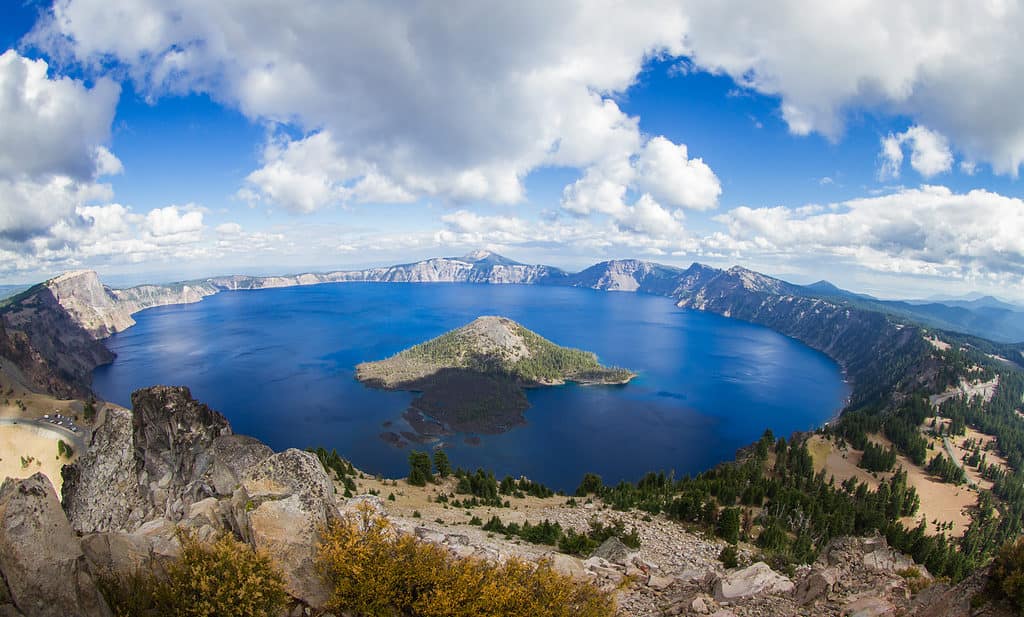
This gorgeous natural lake is famous for its beautiful scenery and crystal-clear deep water.
©Wollertz/Shutterstock.com
Summer Lake
In Lake County, Oregon’s Summer Lake stretches 15 miles long and five miles wide. It’s a huge, shallow, alkali lake with marshes, so it’s a bird-watching paradise. Bald eagles, yellow-headed blackbirds, hermit thrushes, and great blue herons crowd the marshes.
Amazingly, on hot days, the lake disappears! The spring-fed Ana River fills Summer Lake, and because there are no outlets, the water evaporates, leaving carbonate salt behind.
Crane Prairie Reservoir
It’s not the biggest man-made lake in Oregon, but Crane Prairie Reservoir is teaming with wildlife. In fact, it’s named after the cranes that populate the area.
Crane Prairie Reservoir’s shoreline is 22 miles long, and its water is 6 meters deep. The reservoir, which was built in 1922 and rebuilt in 1940 to create irrigation areas, has recently become central Oregon’s top wildlife-watching spot.
Ospreys perch on tree stumps that jut from its clear water (a forested area was drowned to create the reservoir, and the stumps are what remain). Crane Prairie Reservoir is home to the largest nesting osprey colony in the Pacific Northwest! The Crane Prairie Osprey Management Area protects this stunning bird of prey.
Bird watchers also spot bald eagles, blue herons, kingfishers, sandhill cranes, Canada geese, and cormorants skimming the surface. And just a glance away, Rocky Mountain elk graze on the lakeside meadows.
Recap
Oregon’s largest man-made lake (by length) is Lake Owyhee. It’s a staggering 53-mile-long, 25-meter-wide serpentine oasis in arid Oregon that supports farmers, fish, and incredible wildlife like pronghorns, golden eagles, and an occasional mountain lion.
The photo featured at the top of this post is © Oregon State Archives, CC BY 4.0
Thank you for reading! Have some feedback for us? Contact the AZ Animals editorial team.



